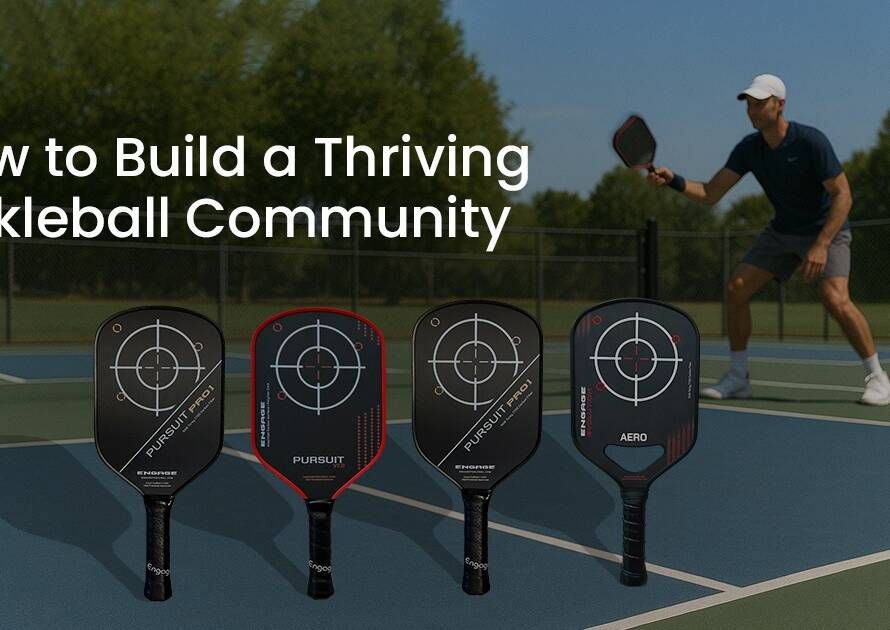Paddle Ball vs. Pickleball
Being new in racket sports, you have undoubtedly heard of both paddle battles and pickleball. Although they are similar sports, they are different in their own ways with differentiated rules, equipment, and playing methods. This guide provides the chief differences between paddle battles and pickleball so that you can decide which one to give a go.
Quick Comparison Table
| Feature | Paddle Ball | Pickleball |
| Court Size | 20×34 feet | 20×44 feet |
| Scoring System | Up to 21 points | Up to 11, 15, or 21 points |
| Serving | Underhand or overhand | Only underhand |
| Ball Type | Rubber ball | Perforated plastic ball |
| Paddle Type | Heavier paddles | Lighter paddles |
| Speed | Fast-paced | Moderate |
| Learning Curve | Medium | Easy |
| Community | Smaller | Large & growing |
| Workout Intensity | High | Moderate |
Brief History of Paddle Ball and Pickleball
Paddle Ball

Paddle ball has been around since the early 20th century and has evolved into different versions, including one wall and four wall paddle ball. It is commonly played in urban settings, particularly on handball courts. The game gained popularity due to its accessibility, requiring minimal equipment and court space.
Pickleball

Pickleball was invented in 1965 by Joel Pritchard and his friends as a fun backyard game for families. Over the years, it has gained immense popularity and is now played competitively worldwide, with professional tournaments and leagues. The sport’s appeal lies in its simple rules, making it easy for players of all ages to pick up and enjoy.
Rules & Gameplay Differences
Court Size

- Paddle Ball: Played on a handball or racquetball court (one-wall or four-wall variants), typically measuring 20×34 feet.
- Pickleball: Played on a smaller court similar to a badminton court (20×44 feet), with clearly defined service zones and a non volley zone (the “kitchen”).
Scoring System
- Paddle Ball: Typically played to 21 points, with a requirement to win by at least two points. Players can score on any rally.
- Pickleball: Played to 11, 15, or 21 points, but only the serving side can score. Games are usually played in doubles format.
Serving
- Paddle Ball: Underhand or overhand serves are allowed, and the ball must hit the front wall before play continues.
- Pickleball: Only underhand serves are permitted, and the ball must be hit below the waist while making contact with the paddle. The serve must be diagonal and land beyond the non-volley zone.
Gameplay Speed
- Paddle Ball: Fast-paced with a focus on power and quick reflexes, similar to squash or racquetball.
- Pickleball: More strategic with a mix of power and finesse. Players focus on shot placement, control, and minimizing unforced errors.
Equipment Comparison
Paddles

- Paddle Ball: Heavier paddles made of wood, graphite, or composite materials, designed for impact against a hard rubber ball.
- Pickleball: Lighter paddles, typically made of composite or polymer materials, designed for controlled play with a plastic ball.
Balls

- Paddle Ball: Uses a rubber ball that bounces significantly, making it faster and more dynamic.
- Pickleball: Uses a perforated plastic ball, similar to a wiffle ball, which slows down the pace and allows for strategic play.
Popularity & Community Insights
- Paddle Ball: More popular in urban areas and recreational courts, particularly in the northeastern U.S. and Latin American countries.
- Pickleball: Has grown rapidly in the U.S. and internationally, with professional leagues, a strong community of players across all age groups, and dedicated pickleball courts being built worldwide.
Physical and Social Benefits

Paddle Ball
- Enhances cardiovascular fitness and endurance due to the fast-paced nature of the game.
- Improves hand-eye coordination and reaction time.
- More intense workout, making it suitable for players seeking high-energy play.
Pickleball
- Promotes social interaction and is often played in doubles, making it a great way to connect with others.
- Easier on the joints due to its moderate pace, making it suitable for older adults and beginners.
- Improves balance, agility, and strategic thinking.
Which One Should You Try?
If you enjoy a high-speed, reaction-based game with wall play, paddle ball is a great choice. On the other hand, if you prefer a social and strategy-driven sport that’s easy to learn and accessible to all ages, pickleball is the way to go.
Looking to improve your skills in paddle ball or pickleball? Join Rackonnect Reppp for expert coaching, training sessions, and the latest updates in paddle ball and pickleball!




